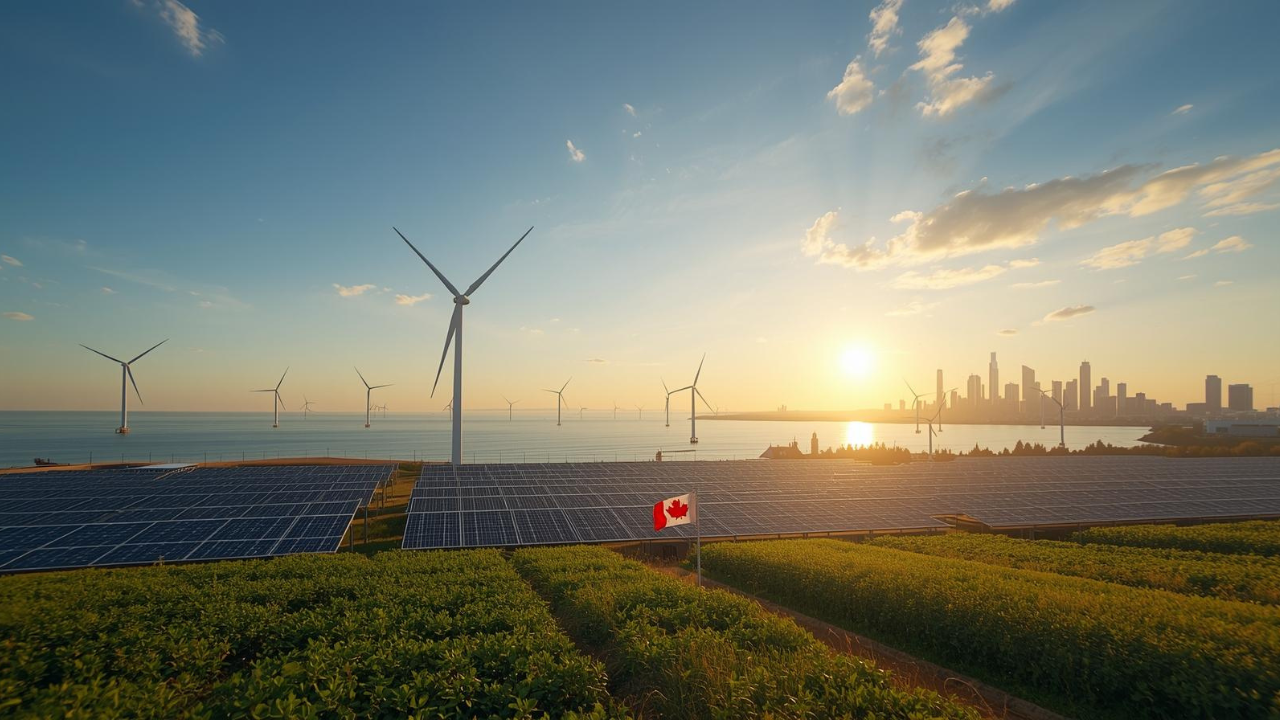
UK Chess Master Jailed 28 Months for Stalking Woma
Paul Keevil sentenced to 28 months for stalking, harassing, and blackmailing a woman in her 20s, hig

Canada stands at a defining moment in its energy history. With a federal plan to reach net-zero emissions by 2050 and increasingly ambitious near-term targets, 2024–2025 saw decisive policy measures, large private investments, and the first major steps toward offshore wind licensing and clean hydrogen scaling. This article explores the background, the latest developments, expert viewpoints, and the likely social and economic impacts of Canada’s green energy transition.
Key takeaway: Canada’s path to clean electricity hinges on rapid build-out of renewables, grid upgrades, industrial decarbonization via hydrogen and CCUS, and ensuring communities and workers benefit from the shift.
Canada has a long history of low-carbon electricity generation — much of its power has come from hydro. But the recent energy transition is broader: it’s about electrifying transport and industry, integrating intermittent renewables like wind and solar, and introducing new fuels such as clean hydrogen. In December 2024 the federal government finalized the Clean Electricity Regulations to curb emissions from fossil fuel electricity generation and to provide regulatory certainty for long-term investments. :contentReference[oaicite:0]{index=0}
2025 marked Canada’s decisive step into commercial offshore wind. The federal government and Nova Scotia designated the first offshore wind areas and set a goal to license up to 5 GW by 2030 as part of a program to spur large-scale projects and exports. These moves aim to harness Atlantic wind resources for domestic power and potential export via interconnections or hydrogen export. :contentReference[oaicite:4]{index=4}
Canada’s hydrogen strategy, initially launched in 2020 and advanced through investment incentives and tax credits, positions Canada to scale green and blue hydrogen for heavy industry and export markets. Federal investment tax credits and Clean Hydrogen supports are actively encouraging projects, and private investments (like large electrolyser and facility projects) are gaining traction. :contentReference[oaicite:5]{index=5}
Clean Electricity Regulations (CER) and related federal strategies provide regulatory certainty to spur grid-scale investments, while public and private funds are mobilizing billions for transition projects — from battery storage to transmission upgrades and hydrogen facilities. The government projects sizable GDP contributions from clean energy over the coming years. :contentReference[oaicite:6]{index=6}
Funding sources are diverse: federal grants and tax credits, provincial incentives, the Canada Infrastructure Bank, private capital (including international investors and large asset managers), and project finance from utilities and industrial partners. Large-scale private funds focused on energy transition (globally) also direct capital to Canadian opportunities, particularly where regulatory clarity exists. :contentReference[oaicite:7]{index=7}
— Clean Electricity Regulations finalized Dec 2024; implementation and planning underway in 2025. :contentReference[oaicite:8]{index=8}
— Target: license up to 5 GW of offshore wind in Nova Scotia waters by 2030; first lease areas designated July 2025. :contentReference[oaicite:9]{index=9}
— Hydrogen policy incentives and tax credits rolled out in 2024–2025 to stimulate clean hydrogen production and exports. :contentReference[oaicite:10]{index=10}
— The clean energy sector is projected to be a multi-billion-dollar contributor to Canadian GDP and jobs as deployment scales. :contentReference[oaicite:11]{index=11}
“Regulations and clear targets are what unlock private capital,” says an energy policy lead at Natural Resources Canada (paraphrased). Policy certainty — especially for multi-decade infrastructure like transmission and interconnectors — lowers risk for utilities and investors.
Industry experts point to the need for faster permitting, workforce training, and grid upgrades to handle intermittent renewables at scale. Clean-energy NGOs emphasize equitable benefits for communities and Indigenous partnership in project development. Reports from Clean Energy Canada and others stress that policy alignment across federal and provincial levels will determine how quickly projects reach final investment decision. :contentReference[oaicite:12]{index=12}
Public reaction is mixed but broadly supportive of clean-energy investments that create jobs and reduce emissions. Coastal communities in Nova Scotia and Atlantic Canada have expressed interest in local economic benefits from offshore wind, while some rural and Indigenous stakeholders call for strong consultation and benefit-sharing agreements. International markets and trading partners view Canadian clean power and hydrogen as potential low-carbon inputs for industry and shipping — creating export prospects.
Clean energy deployment is likely to create thousands of construction and long-term operations jobs, stimulate supply-chain growth, and attract manufacturing for turbines, electrolyzers, and battery components. Atlantic Canada hopes to become a manufacturing and service hub for offshore wind. Conversely, fossil-fuel regions may face transitional pressures requiring retraining and investment to avoid regional economic shocks. :contentReference[oaicite:13]{index=13}
Adding large volumes of variable renewables requires substantial grid upgrades, transmission build-out, and energy storage. Policymakers must ensure grid resilience and invest in cross-provincial interconnections to balance supply and demand — especially for exports or hydrogen production that requires firm low-carbon power. :contentReference[oaicite:14]{index=14}
Federal regulations (CER) create national standards, but provincial cooperation is essential for project siting and permitting. Indigenous consultation and partnership are critical legal and ethical components of project approval processes, and benefit-sharing models will be central to social license. :contentReference[oaicite:15]{index=15}
Environmental impact assessments will focus on marine ecosystems for offshore wind and on land-use impacts for onshore projects. Socially, the transition offers an opportunity to prioritize equitable job creation, community investments, and measures to protect vulnerable workers and regions during transition.
Nova Scotia’s designation of offshore lease areas and the federal-provincial “Wind West” initiative are early signals that large-scale Atlantic offshore wind is moving from planning to tendering. If executed well, this could anchor regional supply chains and generate exportable power. :contentReference[oaicite:16]{index=16}
Large industrial hydrogen projects in Alberta (publicly announced investments and private deals) illustrate how hydrogen could decarbonize petrochemical feedstocks and create an export commodity; some projects include CCUS to make “blue” hydrogen. :contentReference[oaicite:17]{index=17}
Disclaimer: This article synthesizes government releases, industry reporting and public documents available as of October 12, 2025. Readers should check original sources and local project notices for the latest developments.
Canada’s green-energy revolution is underway, anchored by a stronger regulatory framework, targeted investment incentives and the emergence of new sectors like offshore wind and clean hydrogen. The path ahead requires ambitious project delivery, aligned policy across jurisdictions, and careful attention to equity and environmental stewardship. Successfully navigating these elements could make Canada a major supplier of clean power and low-carbon fuels while generating jobs across the country.